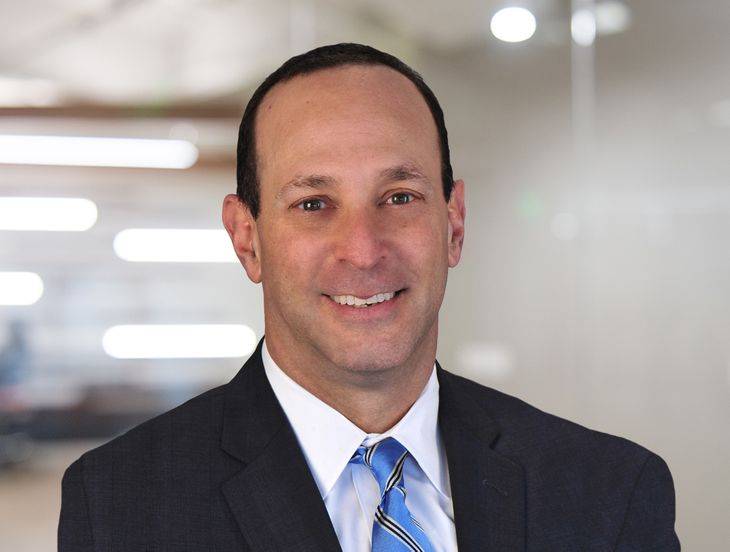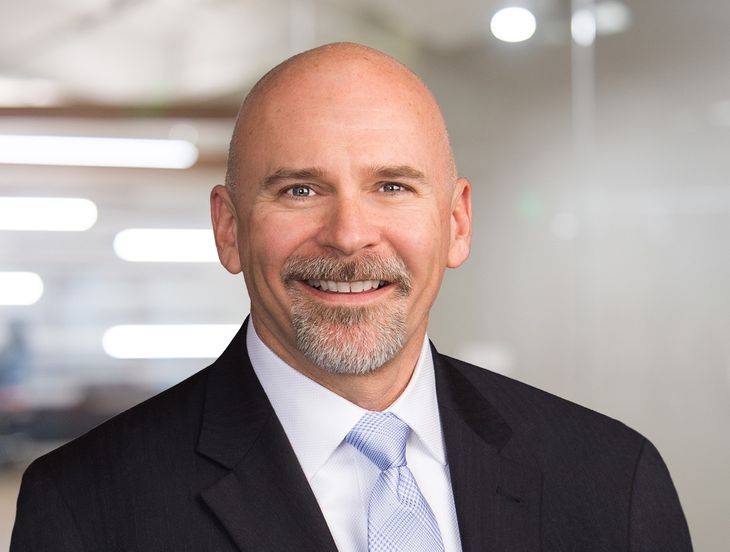Back-To-School FAQs For Educational Institutions During The COVID-19 Era
Insights
5.22.20
As the country begins to re-emerge amid the COVID-19 pandemic, whether and when any particular school will be ready to return for the upcoming school year and at what level will depend on the individual school, its location, and its community. Every institution must be aware of the state/local orders and the guidance provided by the Centers for Disease Control and Prevention (CDC) and other government agencies regarding eligibility to return and recommendations for doing so. The conditions upon which the school reopens will also depend on the level of COVID-19 in your community, the comfort of your parents and employees, and the financial ability of the school to manage a combination of online and in-person operations at the same time.
We have outlined below a series of FAQs that address questions most frequently posed to our Education Practice Group attorneys about permitting employees, students, and others to return to the campus, the safety precautions recommended, and the legality of the various options that may be presented to school. These FAQs discuss back-to-school issues with a focus on school operations. Our Fisher Phillips website contains detailed, comprehensive Post-Pandemic Back to Business FAQs that cover many general business questions not addressed here.
TABLE OF CONTENTS
- BACK-TO-WORK FOR EMPLOYEES
- SAFETY PROTOCOLS – MASKS
- SAFETY PROTOCOLS – TESTING
- SAFETY PROTOCOLS – SOCIAL DISTANCING
- DISTANCE LEARNING
- SNACKS AND LUNCHES
- CAMPUS VOLUNTEERS AND VISITORS
- SUMMER CAMPS
- EXTRACURRICULAR ACTIVITIES AND FIELD TRIPS
- KEY DOCUMENTS
- FINANCIAL ISSUES
- MISCELLANEOUS ISSUES
BACK-TO-WORK FOR EMPLOYEES
As a general guideline, schools should understand the considerations that will come up when planning for employees to return to work. You must be familiar with your state’s orders, local orders, and CDC guidance. In some cases, as discussed below, you need to be aware of the changing positions of the Equal Employment Opportunity Commission (EEOC) regarding its interpretation of whether employers can engage in testing and temperature taking. You also need to know that these orders and guidance will change based on the level of coronavirus in your community.
Can we tell an employee who is “at-risk” either due to age or underlying health condition that they must work from home?
No, unless there is an applicable shelter-in-place order or other directive from a public agency, or the employee’s condition is a “disability” that poses a “direct threat” to their health and safety as defined in the Americans with Disabilities Act (ADA) (such as a heart condition, diabetes, some type of immunosuppressed condition, etc.), and the risk cannot be substantially mitigated or eliminated by a workplace accommodation. Where the employee has a known disability, you may ask employees if they will request accommodations when the workplace reopens and should engage in the interactive process.
If an employee is unable to return to work due to an underlying health condition, what are the school’s options where on-campus work is necessary?
If an employee says that they cannot return to the campus due to COVID-19 or an underlying health condition that makes them vulnerable to COVID-19, you need to engage in the ADA interactive process. This means that you need to have a conversation with the employee to understand the situation, the employee’s limitations, and determine whether there are any accommodations that will permit the employee to perform the essential functions of the job. You may obtain medical evidence of the underlying medical condition and the physician’s suggested accommodations. You may also send the employee’s physician a questionnaire asking about the employee’s limitations.
If the employee cannot return to the workplace and the school believes that the employee’s position must be performed on campus (due to supervision of students or other job-related functions that can only be performed on campus), then the school needs to look at other possible options. One option is to assess whether the employee is eligible to take up to two weeks of paid leave under the Families First Coronavirus Response Act (FFCRA) if the school has fewer than 500 employees. Note that if an employee has already taken leave under the FFCRA – either as part of the Emergency Paid Sick Leave Act (EPSLA) or the Emergency Federal and Medical Leave Act (EFMLA) – they will only be entitled to the balance of leave permitted under those laws through December 31, 2020. For an overview of FFCRA requirements, see our summary chart here.
Separately, however, if the employee is not entitled to paid leave (under FFCRA or your school’s policies) then they may still be entitled to unpaid FMLA leave or a leave of absence under the ADA. You should not assume that you can terminate the employee. This is a high-risk area so we recommend you involve legal counsel.
We have some employees who are just not comfortable coming back to work. Can we force them to do so – or terminate them?
You must first review your state/local orders and CDC guidance. Your employees may be in a category under your state or county reopening order that provides an option to remain home, such as if they are over the age of 65 or have an underlying medical condition. If so, you may need to accommodate their condition. The employee may also be entitled to paid leave under the first category of the FFCRA, discussed above.
If the employee is simply fearful without any underlying medical or vulnerability issues, you should try to address their concerns by discussing the safety steps that the school is taking to reduce the likelihood of the exposure to COVID-19 in your workplace. Of course, if the employee has no qualifying reason for refusing safe work, you may be in a position to advise that this refusal could impact the employee’s entitlement to benefits or continued employment. This is an area that we recommend be addressed on a case-by-case basis with the advice of legal counsel.
What if an employee does not have childcare over the summer because summer camps are not allowed?
How you handle this situation depends on whether you are a covered employer (fewer than 500 employees) under the FFCRA. If the school is covered, the employee may be entitled to the EFMLA and to the EPSLA benefit. See Fisher Phillips’ chart on those benefits here.
If the school is not covered, the school will need to decide whether it will permit the employee to work from home. If working from home is an option, you should document the circumstances of your decision and the functions that can be performed from home. If the employee’s position is not such that work from home is an option, the school may place the employee on an unpaid leave for a finite period of time or may terminate the employee. Again, this should be handled on a case-by-case basis with the advice of legal counsel.
How should we plan for employee absences?
Schools should put in place contingency plans that provide for the safe and continuing education for its students. A school’s contingency plan will vary depending upon the school’s needs, but plans should ensure that your school is complying with state orders, CDC recommendations and all applicable sick leave provisions, including the FFCRA and federal, state, and local paid sick leave laws.
Examples of some contingency plan considerations may include maintaining a queue of substitute educators; hiring teaching assistants or floating substitutes who can move classroom to classroom; temporarily combining same-grade classes or electives; requiring distance learning for some classes temporarily; and sharing of lesson plans in the event other educators, substitutes, or administrators need to temporarily step in. Departments or grade levels should also be encouraged to come up with a few days’ worth of activities that could be implemented or taught by a teacher or substitute teacher who is not qualified in the particular subject or grade level – for example, an age-appropriate video or movie on the subject that can be shown to students with a corresponding paper to be written.
SAFETY PROTOCOLS - MASKS
Throughout these FAQs, we will be referring to cloth face coverings and masks. There is a difference between the concept of a “cloth face covering” and a “mask.” A mask, in Occupational Safety and Health Administration (OSHA) terms, is typically used to mean a surgical mask or N-95 respirator. Use of a surgical mask or N-95 respirator carries additional requirements and OSHA recommends their use be reserved for healthcare workers.
Thus, in this FAQs, unless we say otherwise, we are generally referring to a cloth face covering. CDC Guidance recommends that people wear a cloth face covering in public settings where other social distancing measures are difficult to maintain. Using a simple cloth face covering slows the spread of the virus and helps people who may have the virus and do not know it from transmitting it to others. Cloth face coverings should not be placed on young children under the age of 2, anyone who has trouble breathing, or is unconscious, incapacitated or otherwise unable to remove the face covering without assistance. Generally, cloth face coverings are not subject to OSHA’s respiratory protection standard.
Are there any special requirements if we require employees to wear face coverings?
The school may always choose to require persons entering the campus to wear face coverings. In some cases, the school will be mandated by state or local order to require persons entering the campus to wear facial coverings. You should note that if the school requires employees to wear face coverings (even if mandated by law), you should pay for them as Personal Protective Equipment (PPE) and be aware that OSHA’s PPE standard likely applies.
OSHA’s PPE standard applies to “all protective equipment, including personal protective equipment for eyes, face, head, and extremities, protective clothing, respiratory devices, and protective shields and barriers.” Before you can require an employee to put on PPE, you must, among other things:
- Perform a hazard assessment;
- Consider other alternative options to protect employees;
- Identify and provide appropriate PPE for employees;
- Train employees in the use and care of PPE;
- Train employees how to clean and maintain PPE, including replacing worn or damaged PPE; and
- Prepare a plan that is periodically reviewed, among other steps, including employee specific requirements.
Surgical masks or N-95 respirators in the school setting should be reserved for those individuals conducting testing of temperatures and/or COVID-19 testing, as discussed below. For more information on Workplace Safety Considerations, please see the Post-Pandemic Back-To-Business FAQs for Employers. For assistance with a hazard assessment, please contact your Fisher Phillips lawyer.
Must/may we require employees/students/visitors to wear a face covering/gloves while working on campus? If so, do we need to provide them?
Although you may do so, you do not have to require persons entering the campus to wear a face covering and/or gloves unless your jurisdiction has an order in place that requires these individuals to do so. It is best to follow the most restrictive policy in place for your jurisdiction.
It is also recommended that, if the school is going to require face coverings and/or gloves, that you pay for and or provide these items. Many schools are providing civilian-grade face coverings (rather than the N-95 respirator masks) with the school logo.
If you are going to require individuals to wear face coverings, you should have an ample supply available in case persons entering campus forget to bring their face covering to school each day. Some employers are requiring employees to leave their cloth face covering at work and the employer washes/sanitizes them daily.
What if an employee claims they have a medical condition that prevents them from wearing a face covering or mask?
The school should be prepared to engage in the interactive process with this employee as required under the ADA. This should include using a medical questionnaire directed to the employee’s treating physician asking about any other options or whether the condition precludes the employee from wearing any kind of face covering.
SAFETY PROTOCOLS - TESTING
Do we need to or are we permitted to take temperatures of employees/students/visitors before allowing them to on campus? Should we store that information anywhere?
Certain local or state orders may require schools or employers to take temperatures of persons entering their campus when schools begin to reopen. However, unless obligated to do so by a local or state order, taking temperatures is not required.
If you nevertheless choose to do so, you must ensure that you are acting in accordance with EEOC and ADA guidelines. This is because, under the ADA, taking an employee’s temperature is considered a “medical examination” under the law. The ADA requires that any mandatory medical test be job related and consistent with business necessity. Given the high incidence of COVID-19 in the community, the EEOC has stated that taking an employee’s temperature meets that standard because it is helpful in screening out employees who may have COVID-19 and thus spread it to the workplace. You should watch for changes in the EEOC’s position on temperature taking (and other medical exams discussed below) as the incidence of COVID-19 in your community reduces.
If you choose to conduct temperature checks, it will require planning, training and can be expensive. Also, many individuals infected with COVID-19 will not exhibit any symptoms, and thus temperature screening likely will not prevent all individuals who transmit the disease from entering the campus. CDC guidance recommends screening for fevers of more than 100.4 degrees Fahrenheit, but keep in mind some states may recommend different thresholds.
If you decide to screen employees, you should plan to check the temperatures of campus visitors, vendors, and contractors to ensure a safe school environment. If you decide to conduct temperature checks on students as campuses re-open, you should obtain parental consent, comply with privacy guidelines, and mitigate risk by not maintaining or storing biomedical information. You should also regularly check for updates on the ability to engage in these medical evaluations as this is a rapidly developing field.
- Training to Take Temperatures: You may want to outsource the process of having temperatures taken because of the safety and other processes involved. Of course, using an outside entity may be cost-prohibitive. If the school chooses to have employees take another person’s temperature and therefore requires the employee to be within six feet of any individual who may have COVID-19, OSHA recommends that they wear PPE consisting of some combination of gloves, a gown, a face mask, and/or a face shield or goggles. The screening employees should also be trained on the required PPE under OSHA’s PPE standard.
- Maintaining Social Distancing and Logistics: Safety measures should also be taken for individuals waiting in line to be screened. This includes ensuring individuals stand six feet or more from each other while they wait to have their temperatures taken. Screening a large number of individuals prior to the beginning of each school day may take time and cause delays. Be prepared to stagger starting employee schedules and create outdoor waiting areas where individuals may wait in line prior to entering campus. Privacy, especially where screening takes place and results are announced, should be accounted for during this time.
- Privacy Concerns: Privacy concerns will be prevalent during the employee screening process. The EEOC has cautioned that employers can ask employees if they are experiencing symptoms of COVID-19, including taking their temperatures, provided that all biomedical information is maintained as a confidential medical record, and separate from the employee’s personnel file. Some states, such as California, may require employers to provide a notice to all employees prior to screening them for biomedical data. Follow your local and state guidance in this area. To mitigate these issues, and if not required by a governmental order, avoid collecting or storing an employee’s biomedical information to the extent possible. Instead, use an instantaneous-reading thermometer and show the employee their temperature simultaneously with the screening. Some states, such as Texas, are requiring schools to screen anyone who comes on campus via a questionnaire. The same privacy concerns apply to this type of screening. The information maintained should be kept separate from an employee’s or student’s file and individuals should be permitted to fill it out in a way that maintains their privacy. For example, if employees, students, and visitors fill out an electronic form, they should not be able to view other individuals’ responses to the screening questions.
- Wage Issues: Keep in mind that non-exempt employees may claim that their time waiting in line or being screened for a fever is compensable and thus they should be paid for it. Although no case law or Department of Labor guidance on point exists currently, we recommend that you err on the side of paying employees throughout the screening process. This also requires you to implement a system to have employees “clock in” when they get in line for screening and to document their time.
For more information on taking temperatures, please see our Post-Pandemic Back-To-Business FAQs for Employers.
Can we test employees for COVID-19?
According to the EEOC’s Technical Assistance Questions and Answers, an employer may choose to administer COVID-19 testing to employees before they enter the workplace to determine if they have the virus. As mentioned above, the ADA requires that any mandatory medical test of employees be “job related and consistent with business necessity.” Applying this standard to the current circumstances of the COVID-19 pandemic, employers may take steps to determine if employees entering campus have COVID-19. That’s because an individual with the virus will pose a direct threat to the health of others.
Consistent with the ADA standard, you should ensure that any tests you administer are accurate and reliable. For example, you may review guidance from the U.S. Food and Drug Administration about what may or may not be considered safe and accurate testing, as well as guidance from CDC or other public health authorities. Make sure to check for updates, as this is a rapidly developing field.
You may wish to consider the incidence of false-positives or false-negatives associated with a particular test. Remember that accurate testing only reveals if the virus is currently present; a negative test does not mean the employee will not acquire the virus later. Keep in mind, also, that these are medical exams that must be conducted in a confidential way and the results need to be maintained in a separated medical file. Further, PPE should be provided to employees administering the test, as well as training on how to properly use the PPE. For those that may have an exposure to bodily fluids as part of their job, you should provide proper training on blood borne pathogens.
Can we test students for COVID-19?
If you decide to conduct COVID-19 testing on students as campuses re-open, you should obtain parental consent first. Conducting such tests will require planning, training and can be expensive. You should follow the guidelines referenced above if employees/school nurses are conducting such testing and with respect to privacy concerns, unless required by governmental order, you should mitigate risk by not maintaining or storing biomedical information. Again, make sure to check for updates, as this is a rapidly developing field.
SAFETY PROTOCOLS - SOCIAL DISTANCING
What steps should we take to ensure social distancing on campus for employees?
To the extent possible, spread out employee workspaces. Try to avoid having employees share small office spaces by converting other spaces to workspaces (libraries, gyms, theatres, weight rooms, conference rooms, etc.), rotating hours for workspaces, or requiring employees to sign up to use workspaces. Consider using non-permeable, temporary dividers if other options are not available. Depending on state and local orders, some schools may need to consider staggered schedules for employees and students.
Provide employees with instruction on social distancing in spaces like copy or supply rooms, teachers’ lounges and communal workspaces. Post signage stating the maximum number of employees at a time in a given space and reminders to keep six feet apart.
Eliminate high risk areas such as coffee and water stations. Encourage employees to instead bring their own beverages and discourage employees from bringing food to the office to share. Increase lunch spaces and allow employees to bring lunch back to their workspace, an outdoor space, or even off campus.
Where possible, convert walkways to one-way directions, putting floor and wall reminders in such areas. If one-way direction is not possible due to the building configuration, all persons in such common areas should wear face coverings.
In short, think outside the box about your school’s space utilization and also about rules that can be adjusted.
How might staggering student and employee schedules help to minimize exposure to COVID-19?
While much is still not known about COVID-19, one factor related to transmission that appears to be universally accepted is being in close proximity to others. This is the basis for “social distancing” instructions issued by the CDC and various state and local health agencies. Some states are going so far as to dictate how much square footage per employee or student is required. Thus, it stands to reason that reducing the number of people present in a building will increase the distance between students, teachers, and support staff.
One approach could be to stagger class schedules so that only 50 to 60% of the student body is on campus at any given time. As an example, some schools accepting relocated students following Hurricane Katrina had so many new students that they had to create what amounted to a “night school” – original students came to school from 7:00 a.m. to 2:00 p.m., and dislocated students and their teachers used the campus from 2:30 p.m. to 9:00 p.m.
It is obviously not possible for teachers to work “double-shifts” to reduce capacity in a post-pandemic environment, but overlapping or staggered schedules for both teachers and students may achieve that goal. This can also be a challenge if your school relies on busing.
Another option could be to have students rotate schedules. For instance, one half of a class attends in-person on Monday, Wednesday, and Friday, while the other students attend by video conference those days and in-person on Tuesday and Thursday. The following week, the students rotate and the first group attends by video conference Monday, Wednesday, and Friday and in-person Tuesday and Thursday.
By staggering student and employee schedules, schools can minimize the number of students in a classroom at a time in order to maintain social distancing. Staggered schedules also minimize the potential for contact in high traffic areas such as doorways, hallways, restrooms, lunchrooms, and locker areas. This process also permits students who are not physically at school to view the class simultaneously through distance learning.
Is it necessary to have social distancing at recess or outdoor playtimes? If so, how do we do so?
Social distancing should be maintained at recess and outdoor playtimes. This can be accomplished by way of staggered recess sessions of smaller groups, and by having students take turns using playground equipment such as swings and slides. As with other common areas and structures, each piece of equipment should be wiped down between students.
Playgrounds should be sanitized after each scheduled recess or playtime. Schools should consider colored floor tape or other signage on playgrounds to indicate a counterclockwise flow and social distancing reminders. Students should immediately wash their hands after any activity in which multiple students touched surfaces. For young children, schools should anticipate having more playground supervision to allow adults to enforce social distancing and hygiene and to clean equipment in between uses. Watch your state and local orders for guidance about recess as well.
Do you have recommendations for social distancing or safety protocols on buses?
In addition to taking the bus driver’s temperature at the start of morning and afternoon transportation cycles, bus drivers should wear facial coverings at all times when on the bus. Because the bus driver should be focused on driving safely, schools should have a bus monitor address social distancing and facial covering processes for students. Students should be spread out on the bus to put six feet between them. This will mean staggering the rows and where the students are seated in the rows. There should be no more than one student per row.
What are some ways we can ensure social distancing in hallways and near lockers?
Social distancing can be accomplished in hallways by directing the flow of foot traffic, for example in a clockwise manner. Schools should consider the use of temporary colored flooring or signage to denote the directional flow of traffic as well as safe distances. Some schools are painting the school’s logo on the floors and sidewalks to denote six feet apart.
Lockers can be addressed in a number of ways. If the school has a surplus of unoccupied lockers, it may consider reassigning lockers six feet apart. If this is not possible, the school should schedule staggered, designated times for students to access lockers. The school should also ensure that there is regular cleaning and wiping of the outside locker areas during times when students are present and deep cleaning on appropriate schedules when students are not present. Students and employees should wear facial coverings at all times when they cannot be more than six feet apart in communal areas.
How can we maintain social distancing with use of restrooms?
Schools should consider limiting the maximum number of persons in the restroom at the same time, considering social distancing guidelines. Although physical barriers such as stalls are sufficient where social distancing is not possible, there is still potential for close contact during in ingress and egress, using sinks and urinals in male restrooms. Schools should consider allowing students to use all available bathrooms on campus such as those in locker rooms that might otherwise be closed during the school day. The school must provide appropriate monitoring of all expanded spaces.
What additional safety protocols should we consider?
There are a number of safety aspects that should be assessed regularly on your campus:
- Supervisors/Division Heads/Department Chairs should regularly check in with employees and students to determine how they are feeling and immediately segregate and send home any employee or student who is feeling ill or has a fever. In such a case, the school should immediately engage in a dialogue to determine who the employee or student had close contact with (less than six feet without facial covering) and/or had any type of potential body fluid contact with (coughing or sneezing). The employee or student should be required to be tested for COVID-19 and, if the test is positive, those individuals (or their parents) should be alerted to the situation and possible exposure (without disclosing the name of the employee or student unless the employee or student has consented in writing).
- All rooms that are close quarters and not necessary for use (small teacher lounges) should be closed off or used for alternate purposes. For instance, a small teacher’s lounge could temporarily be repurposed as a faculty office.
- Remove or disable non-essential shared objects from shared spaces, such as water fountains, communal books/bibles, communal athletic equipment.
- All students and employees should be reminded regularly about good hygiene (hand washing, coughing into a tissue that is immediately discarded and hands are immediately washed), wiping down surfaces regularly, regular use of hand sanitizer, etc. Schools should increase the number of hand sanitizer stations around the school and also increase the number of supervised handwashing opportunities for young children. Certain states are requiring a minimum number of supervised handwashing opportunities for students per day.
- Remove public/shared computers, tablets, or other electronic devices from shared spaces.
- For employees who clock in, utilize electronic timekeeping or paper that only the employee handles.
- Hold staff meetings in large rooms allowing appropriate social distancing or via video conference.
- Set up classrooms with as much distance as feasible between student desks and have all desks face the same direction.
- Sanitize classrooms between classes if possible.
- Establish one-way directional travel in hallways and corridors to the extent possible. If not possible, all persons in the hallway area should wear face coverings when passing within six feet.
- Hold parent/teacher conferences via video conference.
DISTANCE LEARNING
Are employees required to engage in distance learning if we ask them to do so?
Ideally, faculty contracts should contain language making it clear that teachers may be called upon to provide instruction virtually as well as in-person, but general language providing the school flexibility regarding assignments, as well as standard at-will language, should provide adequate protection. Given that most employees have already signed their employment agreements for the 2020-21 school year, you might consider adding such a provision to your employee handbook for this year and tweaking your employment agreements for the 2021-22 school year.
Can we still have an employee on a performance improvement plan even if they are doing distance learning?
Before continuing with an existing performance improvement plan (PIP), the school should evaluate whether the behaviors addressed in the PIP may be fairly measured during the employee’s implementation of distance learning. The PIP should have clearly described the goals to be accomplished during the relevant period so that the employee is given clear notice of the school’s expectations and a reasonable chance to meet the terms of the PIP. The school should include language that gives it the opportunity to end, or extend, the PIP in its discretion or take adverse action at any time during the relevant period based on the employee’s performance. Whether the school extends or modifies the PIP because of distance learning should also be guided by the school’s PIP practices to ensure employees are treated consistently to the extent appropriate.
What should we be thinking about when drafting a distance learning protocol?
As an initial matter, schools should determine whether existing job descriptions, policies and enrollment agreements contemplate a distance learning protocol to ensure that enhancements are consistent with them. The protocol should reiterate the school’s mission to provide a quality education, regardless of whether the environment is on campus or in a remote environment.
There are several topics to be addressed in the actual protocol. These include the duration of the protocol; wage and hour practices, including working hours, compensability of tasks for non-exempt employees and expense reimbursements; workplace safety for the remote environment; privacy and boundary protections; and use of the school’s computer systems and related data protection.
Finally, schools should effectively communicate the distance learning protocol to families. This may also be accomplished potentially through clearly drafted announcements to families well in advance of the start of distance learning classes.
Do we need to revise our Acceptable Use Policy for purposes of distance learning?
Schools offering distance learning must review their Acceptable Use Policy to ensure it adequately covers both the devices and internet connectively platform utilized by the school. An Acceptable Use Policy was likely originally written to cover how a student or staff member uses school-issued devices during the traditional school day. Because distance learning is accessed off of the school campus, by both personal and school-issued computers through an internet platform, schools need to make sure the requirements and prohibitions in the Acceptable Use Policy extend to these items. The school should also ensure that it contains a Children’s Online Privacy Protection Act (COPPA) notice or provision advising families of the school’s processes or the potential of third-party platforms gathering personally identifying information.
How should we handle requests for refunds from parents due to the switch to online learning? Should we handle it any differently next year?
If your school has language in its contract providing for online or alternative learning should circumstances require it or providing for circumstances in which a refund will be approved or denied, then the school can point to that language in denial of refunds. However, if your contract does not have such language, but you continued to provide education via online learning, then the school has effectively held up its end of the contractual bargain. (Note, that contract breaches vary by state and you should contact your Fisher Phillips attorney if you have specific questions about this issue.) For the next school year, you should amend your contract so that provisions are included addressing force majeure events and refunds language.
Does our enrollment contract allow us to move back and forth between in-person and distance learning, if necessary?
Generally, yes, as long as the contract itself or the addendum has appropriate force majeure or similar provisions. From a legal perspective, such language should make clear that the school’s obligation under the enrollment contract is to provide educational services in the manner most appropriate under the current circumstances, and this could fluctuate between distance learning and in-person instruction. Moreover, schools may find that some activities (such as parent-teacher conferences, visits with college counselors, and similar small group or one-on-one meetings) will be better suited for videoconference for the foreseeable future.
This, of course, is both a legal and public relations issue. The key will be to manage expectations of students, parents, and teachers while taking prudent steps to ensure everyone’s health and safety.
Should we have every parent sign a waiver allowing their child to participate in distance learning?
The school can attempt to utilize a waiver (or a consent form). But it can also use the alternative process of making clear through policies and revised enrollment contracts (where appropriate) that the school has the discretion to determine the appropriate method of instruction. As outlined below, these issues should also be discussed in force majeure policies and clauses.
When notifying parents about the distance learning process, schools should remind parents that privacy online cannot be guaranteed and that the parents should take steps they deem appropriate (e.g. disabling camera or position of the computer in relation to the child to prevent recording of the child’s image). The parents should be encouraged to supervise their child on the computer to ensure appropriate behavior under the student code of conduct. If the school chooses to use a waiver or consent form, if the student is under 13 years of age, the waiver should comply with requirements of the COPPA.
SNACKS AND LUNCHES
How should we handle lunch and snack service for students and employees? Are there some high-risk items we should eliminate?
Because of the higher risk of actual or presumed transmission of COVID-19 through buffet lines and open food areas, many schools are eliminating such processes. All food should be served in pre-prepared containers or displayed for selection in such a way that students and employees cannot breathe on or touch food without proper protection. Thus, if you choose to have food in food service lines that students/employees select from, ensure that there are glass partitions such that students/employees can see and select the food but not breathe on or touch or self-serve. Those serving the food should be properly checked daily for COVID-19 symptoms and wear facial covering and gloves when serving and preparing food. Consider individually packed and disposable eating utensils and trays.
In some cases, schools are considering having food service through outside vendors such as food trucks or other services and/or are requiring students to bring food from home. The problem with both of these processes is that in peanut-sensitive schools, introducing outside processes increases the risk of peanut oil or peanut particle transmission (as well as other allergens).
Consider whether starting the year with multiple pre-packaged box lunches might be a good idea and then expand as the year goes on, if things seem to be going well. This allows students and employees to carry a lunch with them easily as they attempt to spread out on campus to eat.
Should we serve lunch in the classroom rather than the café or cafeteria?
There is nothing inherently wrong with serving lunch in the cafeteria, except that you must take positive steps to ensure cleanliness and appropriate social distancing, especially since students and employees will not be able to wear facial covering while eating. You may need to utilize the lunchroom area along with other supplemental areas for lunch service and stagger and/or shorten schedules more than the school has done in the past.
Of course, if the school has fewer students coming in day-to-day (such as on staggered daily or hourly schedules), then there may be more space and less time needed to stagger the use of the lunchroom areas. The school can always choose to require students to eat lunch in their classrooms at their desks, again as long as appropriate social distancing is observed.
Another option is to allow students to spread out into other supervised areas that are not typically used for lunch, such as a courtyard, student lounge area, or field house. Just be certain to provide appropriate supervision of students. You should also note that some state and local orders may require students to eat in their classrooms or establish other guidelines.
CAMPUS VOLUNTEERS AND VISITORS
Should we continue to allow parents to volunteer?
The school may allow parents and volunteers to assist at school, recognizing that they must be treated the same as any other person entering campus. If you require temperature and COVID-19 testing, these processes must be applied to all persons entering the campus.
In addition, all persons should be required to maintain social distancing, wear facial covering, and wear other protective equipment if they are working with food or assisting in other ways (such as taking temperatures). The school may also choose not to introduce others back onto the campus so as to avoid the risk of other potential exposures to COVID-19 by the community and to avoid the necessity of training, supervising, and managing third parties.
Should we close campus to all visitors? If so, how should we handle vendors that we need on campus?
In the early stages of back-to-campus life, a limitation of the areas on campus visitors can access may be warranted. For example, if a school typically requires visitors to check-in at a central location but then permits the visitor to access most parts of the campus with proper ID and badging, it might want to limit access to the check-in location and a handful of administrative offices or conference rooms nearby.
Vendors may require additional access, in which case a school should attempt to schedule vendor visits at times when the fewest numbers of students are present (e.g., before and after school). “Convenience visits,” such as allowing parents to have lunch in the café with their child or faculty family members to join employees for lunch, should be limited, at least in the initial stages of reopening. All visitors to the campus should be required to wear cloth face coverings.
SUMMER CAMPS
My state has closed schools for the year, can we still do online summer camps?
Yes, however you must ensure compliance with state and local orders. If employees need to be on campus to lead the online summer camp, then make sure all employees (or contractors) who are leading the various activities at your campus is/are doing so within the state/local orders and CDC social distancing guidelines. If the person(s) leading the various activities is/are doing so from their home, there would be no limitation.
Of course, in any type of online engagement with students (whether one-on-one or small group), all guidelines regarding student and adult interactions should continue to be observed. In addition, if the activities are being recorded, students and parents should be advised that the student’s identity, voice, and image are being recorded and the purposes for which the recording may be used or distributed (including marketing). You should note that if a contractor is leading the summer camp online and recording the activities, the contractor must be reminded of the limitations of recording of student activities and images and use of such recordings.
My state is allowing summer camps and we could really use the money. Is it a good idea to offer camps this summer as we do every summer?
In large part it will depend on your state’s guidance about whether summer camps may resume. The CDC has also published guidance about whether a school should hold its summer camps. Finally, a school should consider how best to protect the students and employees who would participate and how best to mitigate the school’s risk. Among other things, schools should consider:
- The number of students in the camp overall – does it make sense to have a smaller group to maximize social distancing?
- The number of students per class – could you increase the number of classes but decrease the number of students in any given confined space?
- The location of classes – can classes be held in large spaces such as gymnasiums, outdoors or theatres so as to limit contact?
- The structure of classes – can you eliminate high risk activities such as athletic camps involving physical contact sports?
- Eliminate the use of shared items, such as balls, bats, etc. For example, consider having students have their own ball with which to practice hoops, dribbling, etc. with instructions not to touch or grab another student’s ball.
- Assess whether the school has enough employees in place if some get sick.
- Assess whether the school is comfortable requiring a waiver and release from camp participants since insurance coverage for claims arising out of COVID-19 outbreaks is appearing to be difficult, if not impossible, to purchase.
An outside organization wants to conduct summer camps on our campus. Should we be worried or take any special precautions?
The first thing you will need to do is to assess whether any entity (the school or another organization) has the right to use the campus under state/local orders. If your campus can be used, then there are different considerations if the school is already under a contract with a third party versus whether it is considering entering into a contract.
If the school is already under a contract with an outside organization that provides them with the right to enter and use your campus, you should review the contract to determine your rights to implement health and safety precautions that may go beyond the governmental guidelines (such as taking temperatures, requiring COVID-19 testing, etc.). If these issues are not addressed, you should contact your legal counsel to work through the options you have to either limit the outside party or impose guidelines for health and safety purposes.
If you are not already under a contract, you should be very cautious in allowing any outside organization to use your property or facilities in any way that would either impede your school’s ability to fully utilize your campus or would violate the state/local orders or CDC guidelines. You also do not control an outside entity’s employees so you may not be able to obtain necessary information about illness, COVID-19 screening, temperatures, or enforce safety precautions such as use of facial coverings and handwashing, sanitizing, or social distancing.
EXTRACURRICULAR ACTIVITIES AND FIELD TRIPS
What should we consider with respect to athletics?
To a great extent, athletics are going to be determined by your state or local orders and/or athletic conferences. Pay particular attention to indoor sports and those that require student-to-student contact such as wrestling and football.
Schools also need to think through social distancing for spectators. It may be that for some sports, the number of spectators will be limited or the school may live stream the activity for all to watch from a distance.
What should we consider with respect to performing arts?
Performing arts such as dance concerts, musicals, and plays will require preplanning for students and spectators alike. Not only will fine arts teachers need to plan for an increase in absences (more understudies) but also for how to maintain social distancing of students for rehearsals. This might require more rehearsals with fewer students.
Many other aspects of school planning also apply such as limiting cast dinners or asking students to bring their own meal. For performances, schools may have the performance run multiple times to allow seating to be every third seat rather than every seat being occupied in the theater or music hall.
Are we still able to take class trips (overnight and day trips) in 2020-21?
Unfortunately, it is too early to say whether field trips will be feasible for the upcoming school year. The school will need to continue to monitor the situation locally as well as the location of the intended trip.
To the extent that plans need to be made and travel and overnight accommodations purchased, all documentation with providers should have appropriate cancellation and force majeure clauses, permitting the school to cancel or modify the trip with minimal or no consequences. All documentation with parents should also be clear that the trip may need to be cancelled or modified and that parents remain responsible for costs and fees that the school is unable to recover.
KEY DOCUMENTS
Can we require students/parents/employees to sign waivers as a condition to return to campus?
Schools should first think through their goals in asking parents or employees to sign waivers. If the goal is to eliminate liability, the school may not be able to do so. The enforceability of waivers depends on a variety of factors, including but not limited to the exact language of the waiver and the jurisdiction where the waiver is used.
Second, such waivers have limitations and are not always enforceable. For example, they are not typically enforceable against claims of intentional misconduct or claims of gross negligence. As to employees, they are not effective with respect to claims of workers’ compensation and cannot prevent employees from filing EEOC, OSHA, or National Labor Relations Board (NLRB) charges or complaints.
Third, some waivers actually can make the situation worse for the school by including recitations which could be read as admissions about the extent of the risk the school is attempting to manage. Or, the waiver may negate any available insurance coverage. Finally, some states will not enforce student waivers in schools against students on the basis that the state, not the parent, has the right to waive claims on behalf of minors.
Another consideration for schools is to recognize that requiring use of a waiver could be unpopular with the community. And, if the family or employee refuses to sign the waiver, what will the school do? If the school refuses to grant entry to the campus and such waiver was not a part of the enrollment agreement requirement, parents may demand a refund if they do not want to have their child engage in distance learning.
On the other hand, in reality, it may be very difficult to effectively and consistently enforce social distancing with very young children. In this case, the school may make a decision that it will require the waiver and, if the parent refuses, deny the child entry to the campus.
What parts of our contracts and handbooks should we be reviewing and updating?
Schools should work with legal counsel to review employment and enrollment contracts, handbooks, and other protocols to ensure maximum flexibility and compliance with new laws the school may now be required to comply with. Even if some of these guidelines and provisions are not incorporated in your current documents, they should be incorporated as soon as possible for the 2020-21 school year and beyond:
- Employment and enrollment contracts should contain enhanced force majeure clauses which provide the school with maximum flexibility to address a pandemic or other crisis that requires a partial or total school closure.
- Employment and enrollment contracts should contain language that permits the recording of student and employee voice and image, and the publication or reviewing of same as deemed appropriate by the school.
- If the school received a PPP or EIDL loan, it should update its harassment, discrimination, retaliation, and accommodation policies to comply with the regulations that impact the school as a result of the SBA loans (more information can be found here).
- Schools should review their employee and student handbooks to ensure compliance with new laws enacted as a result of COVID-19. Because of the various new federal, state and local laws, schools should first determine which of these laws actually applies to them. For example, some laws only apply to employers with fewer than 500 employees, making them inapplicable to many schools. Further, because many laws sunset (or end) within a matter of months unless extended, schools should prepare to further update the policies as the year progresses and new laws sunset. With this in mind, the following policies should be created, reviewed or updated as applicable: FFCRA, Leaves of Absence, including Sick Leave and Vacation, Benefits, Attendance, Remote Work, Expense Reimbursement, Information Technology and Usage, Timekeeping, Distance Learning, Boundaries, Reassignment and Recall, and Workplace Safety, including Injury and Illness Prevention Programs required in different states. In addition, most new laws require that schools post information about the laws in conspicuous places, including in handbooks, breakrooms, and intranets.
- Those policies outlined above that may be temporary in nature (such as the FFCRA), may be better placed in an addendum rather than the body of the handbook.
FINANCIAL ISSUES
Can we retract promises of salary increases that we made prior to the onset of COVID-19 now that our school’s finances are strained?
Whether you can retract the promise of a salary increase will depend on how that promise was made. If the promise was made in a contract of employment that has been signed by employees, you will have to review the terms of the contract to understand your rights and obligations. Some employment contracts include language that permits schools to reduce salaries or make other adjustments to schedules, staffing, benefits, etc., due to financial or other unforeseen circumstances. If your contract does not include flexible language like this, you will need the employee’s consent to make any salary changes.
You have more flexibility If your employees are not under contract or if their employment status is “at will.” In any event, you should work with legal counsel to determine the best way to make any salary adjustments to ensure that all aspects of the situation and the pros/cons of each possible option are considered.
We have not yet issued contracts for 2020-21 and are considering reducing the number of employees and salaries of those that we will bring back. What should we be considering?
This type of action involves several layers of assessment that you should work through with counsel. When you reduce the number of employees, this is considered a “reduction in force” and must be handled very carefully to ensure that the decisions on which employees to eliminate are not done in a discriminatory manner (which could cost the school more than it has saved). In addition, if the school is considering offering small severance packages to those that are being separated, the severance packages for this type of action have special, additional requirements imposed by the Older Workers Benefit Protection Act.
Separately, as to reducing salaries, you will want to ensure that any salary reductions are handled carefully with advice of counsel to ensure that the school is complying with federal and state wage and hour laws and any applicable notice requirements which may be imposed by your state. In addition, you want to ensure that the decisions on whose salaries to cut and by how much is not discriminatory.
Are there any special considerations we should keep in mind if we are considering reducing benefits, such as PTO and 403(b) contributions?
Again, this is an area that you should work with counsel to ensure that you are not violating any contracts with employees or any of your benefit plan or handbook provisions. Some schools have some employees on multi-year contracts and benefits may have been promised at a stated level in the contract. These should all be evaluated to see if the contract provides flexibility for change. In addition, the 403(b) plan documents should be evaluated to determine when, how, and with what notice the school can eliminate matching contributions.
You should also ensure that all changes you are making to 403(b) benefits are handled consistently for classes of employees. Finally, the school’s handbook and other policies should be reviewed to determine whether the document permits modification at any time. Once you have all of that information, then appropriate notices should be made to the employees before any changes are implemented advising of the changes and the effective date.
If a family failed to pay tuition during the distance learning process, but wants to reenroll, do I have to allow them to do so?
A school should first look at its enrollment contract and financial policies distributed to parents to ensure that it follows all notice and other guidelines in such documents. Although such documents generally make clear that a family’s failure to pay tuition is a breach of their obligations, not all schools prohibit re-enrollment or attendance for such breach.
In addition, the student may be in default under the 2019-20 contract (with one set of conditions) and enrolled for 2020-21 under a new contract (possibly with another set of conditions). Look carefully at all documents before deciding on the best way to proceed.
It may be, given the difficult financial position of both the parents and school, that the school will want to be more flexible and place the parent on a payment plan for the balance of 2019-20 and allow the child to remain enrolled as long as the parent keeps current with the payment plan for 2019-20 and with the payment obligations for 2020-21. All conditions and ramifications should be spelled out clearly due to a failure to pay.
MISCELLANEOUS ISSUES
My state is allowing daycares to reopen. Can we temporarily reclassify our toddler through 1st/2nd grade program as a daycare?
In most states, daycares (which often includes children ages five and under) require licensing, special certification of employees, different types of criminal background process, and health/safety inspections by governmental authorities. You should not assume that your current structure, licensing, or operations would meet these requirements. You should determine the requirements that may be necessary in your state before converting your program in this way and whether you are able to easily convert back, if you choose.
Related People
-
- Suzanne K. Bogdan
- Partner
-
- D. Albert Brannen
- Partner
-
- Jennifer B. Carroll
- Partner
-
- Myra K. Creighton
- Partner
-
- Jason A. Geller
- Regional Managing Partner
-
- Susan M. Guerette
- Partner
-
- Sarah Moore
- Of Counsel
-
- Stephen J. Roppolo
- Partner
-
- Kristin L. Smith
- Partner
-
- Cathy M. Stutin
- Partner
-
- Colette F. Wolf
- Of Counsel










